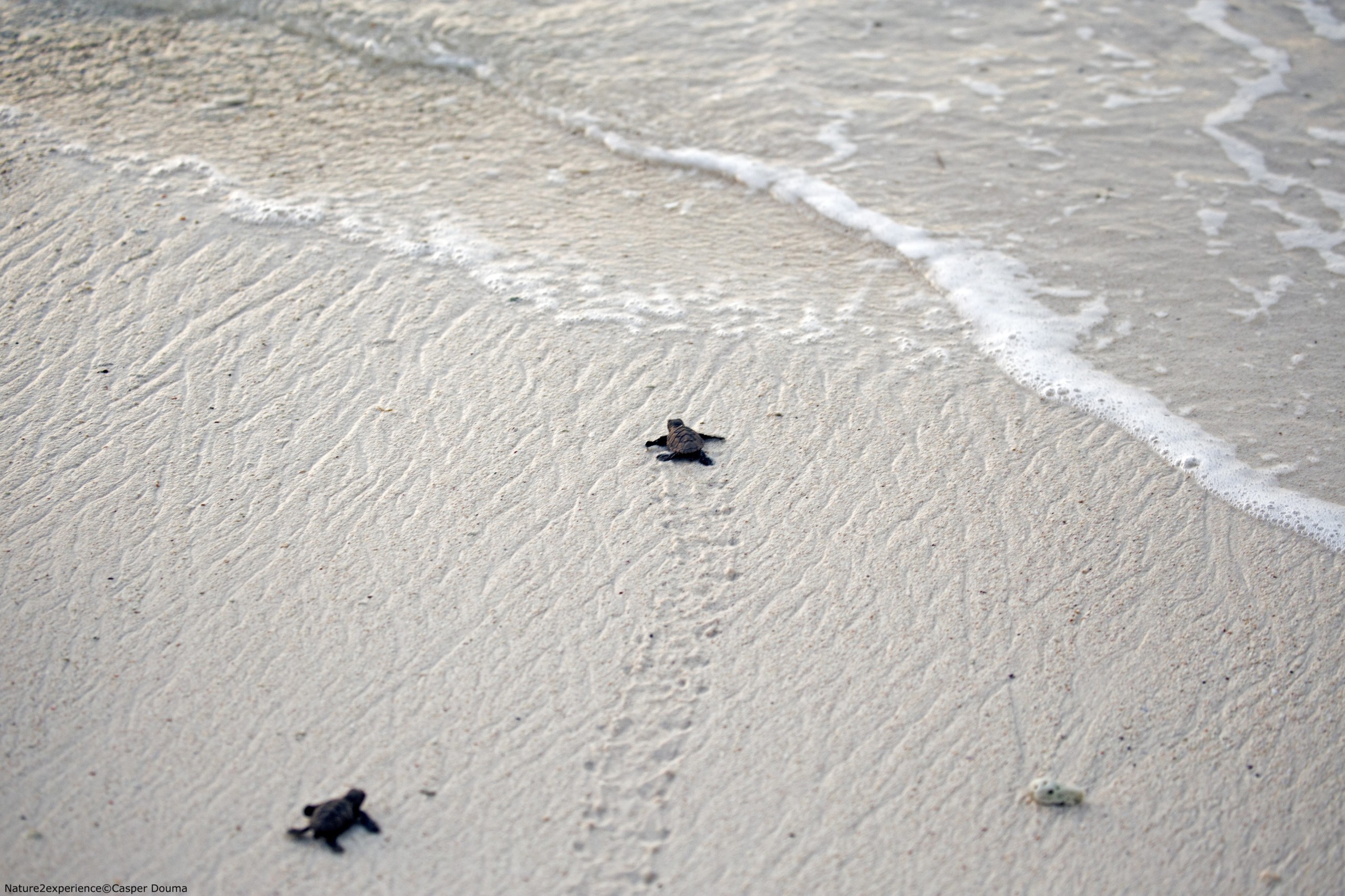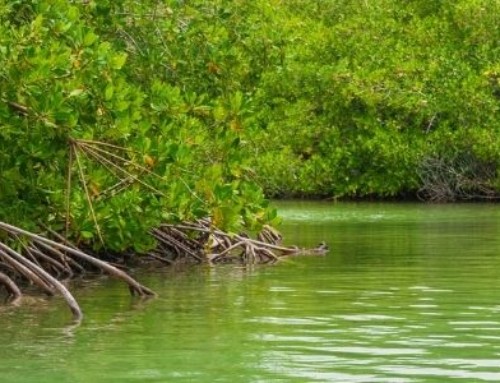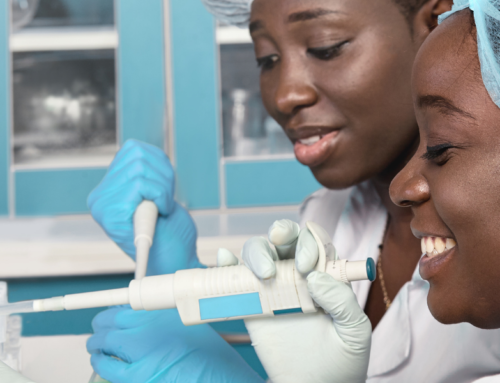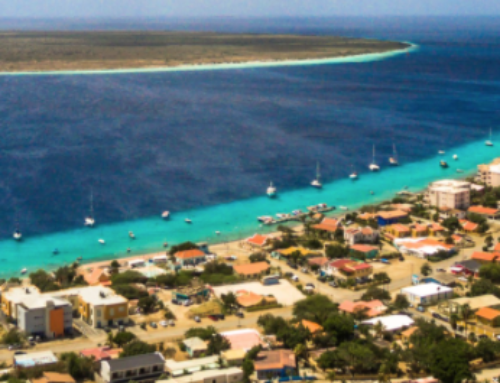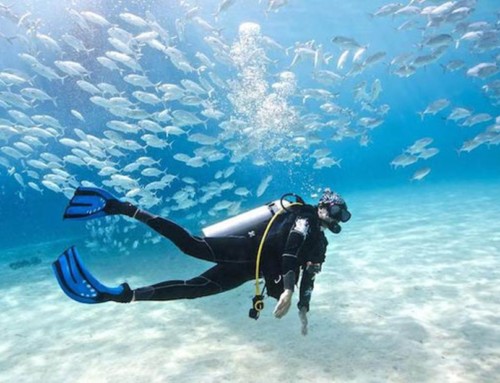Sea turtles are often seen in Bonaire, while diving or snorkeling in the turquoise waters that surround the island.
Bonaire is home to 3 of the world’s 6 endangered or critically endangered species of marine turtles: The hawksbill, the loggerhead and the green sea turtle.
Green sea turtles can often be seen while snorkeling at Lac Bay, they can be seen eating jellyfish, but their main menu is sea grass and rooted algae. A vital part of the ecosystem of Lac Bay comes from the seagrass beds found across the entire shallow bay that serve as foraging ground for the green sea turtles, conch and other animals. You can distinguish them because they have a rather small round head, and the edge of the shell is smooth.
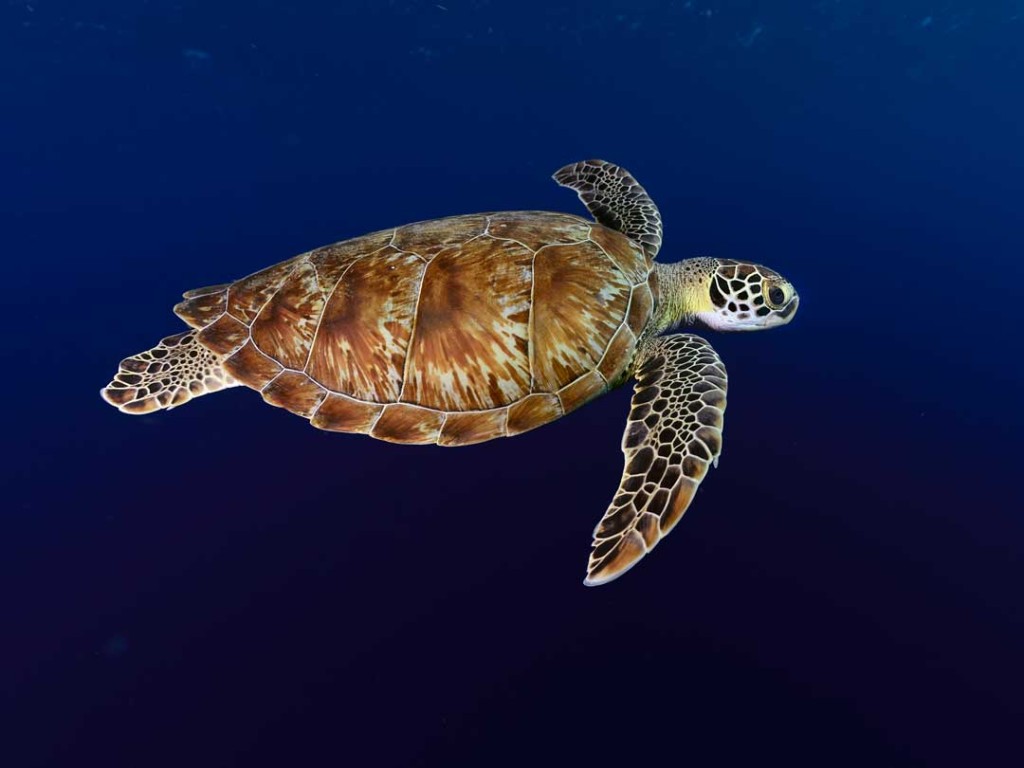
Hawksbill Sea turtles have a pointed face, with a distinct beak-like appearance, that helps them eat their main source of food which comes from coral reef sponges, although they are omnivorous and also eat mollusks, algae, and jellyfish amongst others. Hawksbill sea turtles avoid deep waters preferring coastlines, where spongesare abundant and sandy nesting sites are within reach. Like other sea turtles they migrate incredibly to move from feeding sites to the nesting grounds of Bonaire.
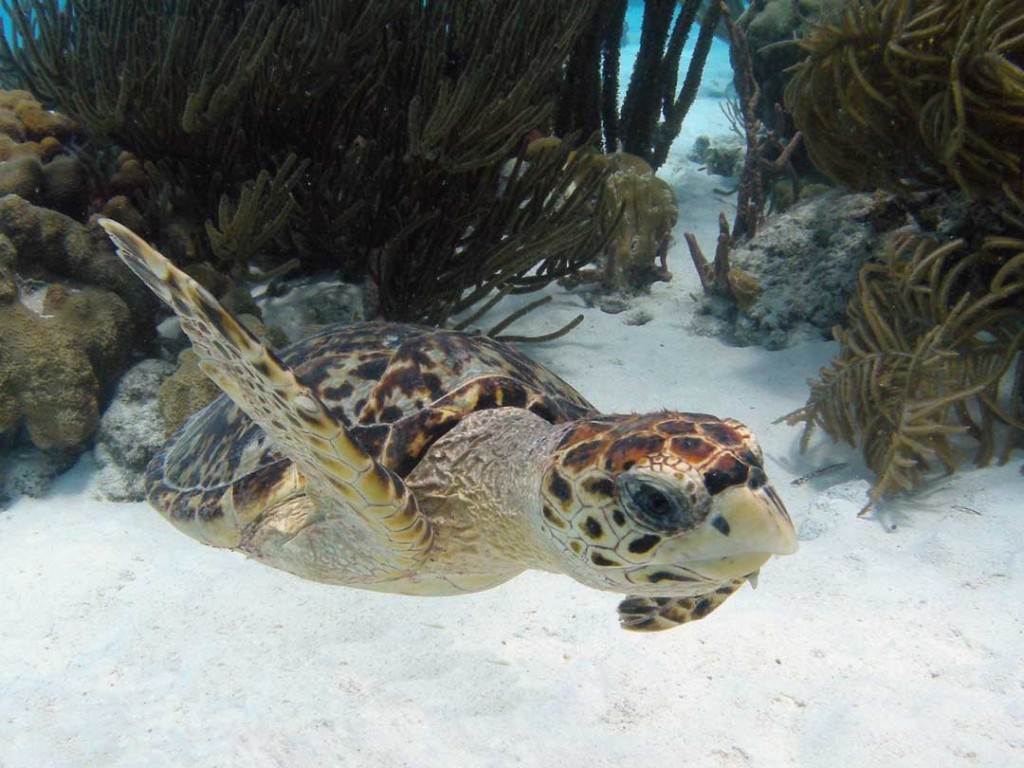
Loggerhead turtles have a massive head that is broad and triangular in shape, with strong jaws and a reddish-brown shell. On Bonaire they are almost always seen as adults already, during the nesting season. These species are carnivores, eating crabs, clams, jelly-fish and other invertebrates. These turtles can be found in most of frigid waters of the world’s oceans, but often return, over thousands of miles, to the beach where they hatched to lay their eggs.
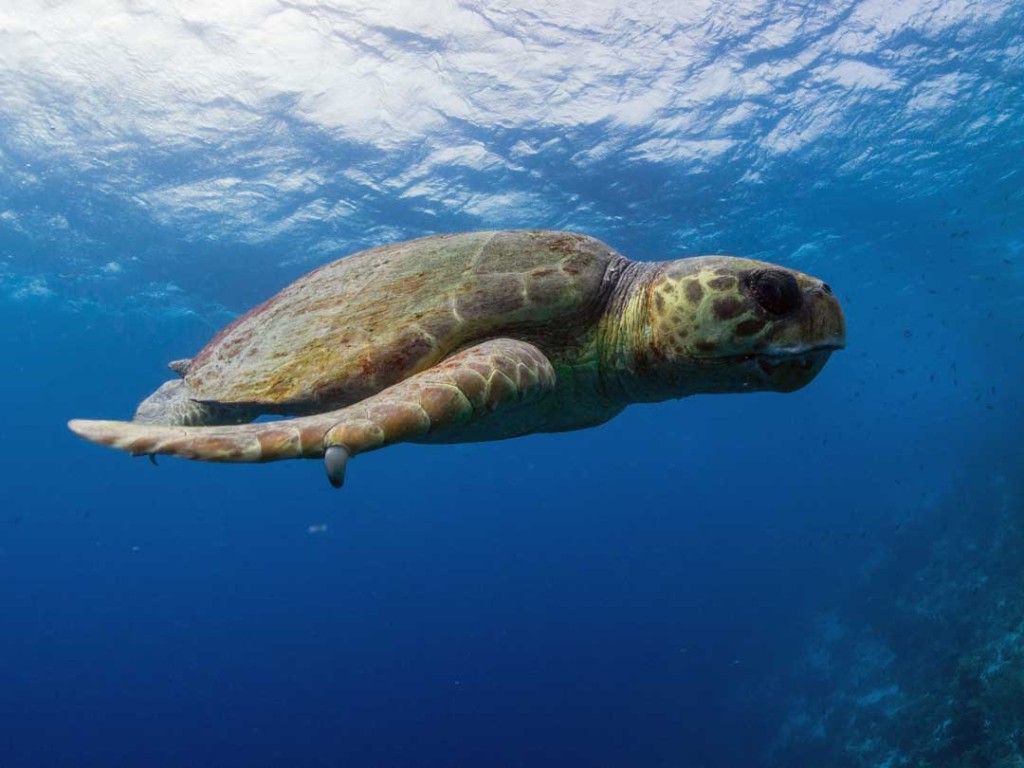
Sea Turtle Conservation Bonaire (STCB) has been protecting this amazing animals since 1991, and you can do a lot to help them on their mission to ensure Bonaire’s sea turtles have a secure future and to connect people to sea turtle conservation in ways that inspire caring for nature, by following these tips:
- While diving maintain buoyancy control to ensure you don’t touch corals or raise sand from the bottom.
- Don’t drive on sandy beaches, incubating eggs could be crushed and ruts can trap hatchlings crawling to the sea.
- STCB has a volunteering program to find and monitor turtle nests, join it!
- During nesting season, from April through January, turn off or shield lights at nesting beaches, lights can prevent females from nesting and disorient newly-hatched turtles trying to find their way to the sea.
- Don’t light fires on beaches , heat and debris can kill the turtle eggs.
- Avoid plastic, if you use it, please dispose plastics appropriately, and if you can help with beach cleaning projects that STCB holds periodically.
- If you ever see a turtle in trouble, call STCB’s hotline +5997800433
And if you can, adopt a nest!
Help STCB protect Bonaire Sea Turtles nests in the interests of sea turtle survival!
